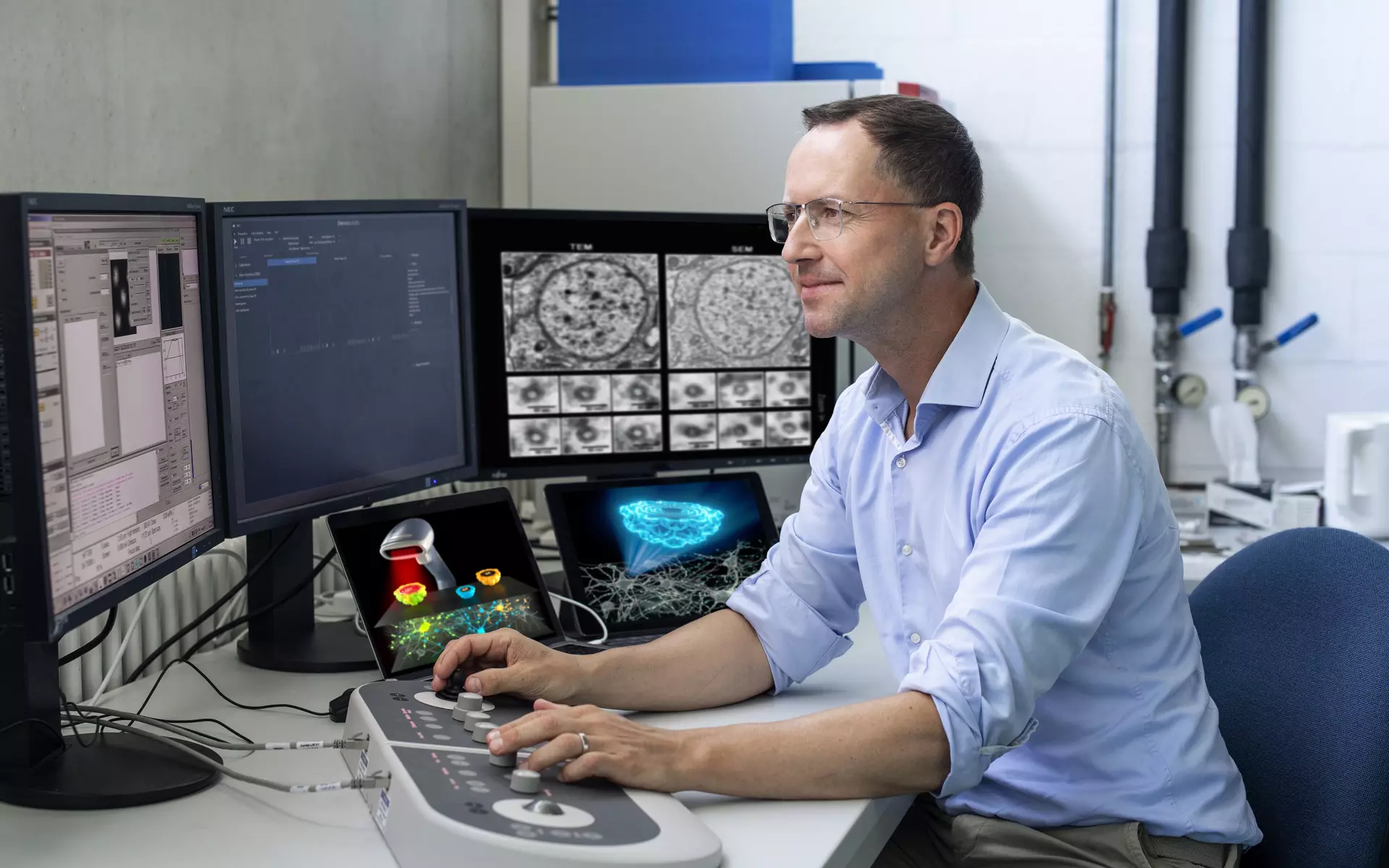How do the brain’s nerve cells communicate with one another? What happens when T cells render cancer cells harmless? Details of the processes at the cellular level are unclear. Special reporter proteins created by a research team guided by the Technical University of Munich (TUM) may now aid in the discovery of these processes.
 A team around Prof. Gil Gregor Westmeyer has developed a new barcoded gene reporter system for electron microscopy. Image Credit: Andreas Heddergott/TUM; Barth van Rossum.
A team around Prof. Gil Gregor Westmeyer has developed a new barcoded gene reporter system for electron microscopy. Image Credit: Andreas Heddergott/TUM; Barth van Rossum.
An electron microscope offers scientists with the most detailed picture of cellular structures, with resolution in the sub-nanometer range. Cell components such as mitochondria and nerve cell connections can also be identified. Nonetheless, many critical structures and processes remain hidden.
This is somewhat like looking at a city map. It is sufficient to get a visual impression of the surroundings and see where the roads are. But it doesn't tell us how often traffic lights are switched, how much traffic there is at any given point, and when or where something is currently under reconstruction.”
Gil Gregor Westmeyer, Professor, Neurobiological Engineering, Technical University of Munich
Gil Gregor Westmeyer is the Director of the Institute for Synthetic Biomedicine at Helmholtz Munich.
However, the ability to intervene in defective processes or reproduce them in artificial tissues and organs necessitates a thorough understanding of the activities that occur within and between cells.
Westmeyer and his colleagues created a genetic reporter system that does the reconnaissance work within the cells for them. The gene reporters are protein capsules that may be seen under an electron microscope.
Identification by Barcodes
The capsules are created by the cells. Their genetic blueprints are linked to particular target genes. When the target genes become active, reporter proteins are produced. This method’s core premise is already a routine approach in light microscopy.
Researchers worked with fluorescent proteins. This strategy, however, is not appropriate for electron microscopy because, rather than colors, distinct shapes are discriminated based on their electron densities, for example.
The researchers took advantage of this by inserting metal-binding proteins into various-sized capsules. Under an electron microscope, these “EMcapsulins” appear as variously sized concentric circles that can be readily detected and allocated as barcodes using artificial intelligence.
Making Invisible Structures Visible
So, how will the researchers use these reporter proteins? They can use them to signal the activity of specific genes, but they can also use them to identify structures that would otherwise be invisible under an electron microscope, such as electrical synapses between nerve cells or receptors that regulate the interaction of cancer cells and T cells.
“If we also give the EMcapsulins fluorescent properties, this will allow us to initially examine structures in living tissue using light microscopy,” notes Felix Sigmund, first author of the study. During the process, stunning dynamics and structures could be noticed, which can then be well resolved under an electron microscope in the next stage.
It is also conceivable to in the future deploy the reporter proteins as sensors that change their structure, for example, when a cell becomes active. In this way, the relationships between cell function and cell structure can be better elucidated, which is also pertinent to understanding disease processes, as well as to produce therapeutic cells and tissues.”
Gil Gregor Westmeyer, Professor, Neurobiological Engineering, Technical University of Munich
Scientists will work with TUM’s new Electron Microscopy Facility and the TUM Center for Organoid Systems (COS).
Source:
Journal reference:
Sigmund, F., et al. (2023). Genetically encoded barcodes for correlative volume electron microscopy. Nature Biotechnology. doi.org/10.1038/s41587-023-01713-y.